PSYC 2530: Behaviorism
A positivist tradition
Matthew J. C. Crump
Last compiled 03/29/22
Reminders
This is the mini-lecture for learning module 5 on Behaviorism.
Roadmap
1 Positivism
2 Watson’s Behaviorism
3 Tolman’s Behaviorism
4 Hull’s Behaviorism
5 Skinner’s Behaviorism
Explanation
A goal of this course is to examine explanations of cognitive processes
The era of behaviorism developed “functional” explanations in the tradition of positivism
A major goal of behaviorism was to predict and control behavior
The Rabbit Hole
A modern example of using big data for prediction and control over human behavior…
Note: there is an assignment around this podcast if you are interested in listening to it
Let’s rewind
We’re going back to the period roughly between 1910s and 1940s, when the school of behaviorism was a dominant perspective in American psychology.
Comte’s Positivism
Created Positivism, “father of sociology”
Early philosopher of science
Argued that science and society develop through three stages: theological, metaphysical, and positive
Auguste Comte (1798-1857)
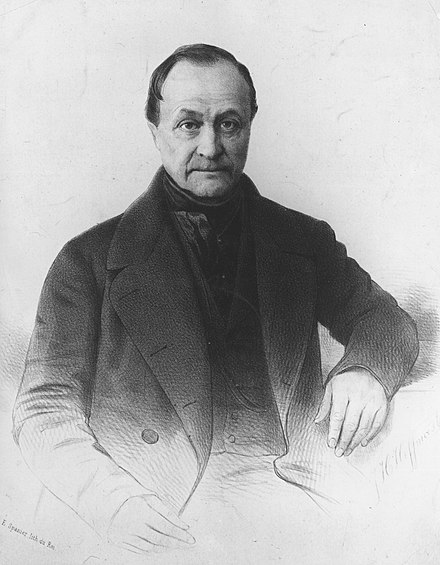
Comte’s stages of explanation
In the theological phase, phenomena are explained by supernatural powers. For example, the mind is attributed to soul or spiritual forces.
The metaphysical stage replaces the supernatural forces with abstractions. For example, the mind is psychic forces.
In the positive stage a description system is achieved that can mathematically describe, predict, and control a process of interest
Scientific Utopianism
Comte sought to extend his positivism to improve society
Motto of Positivism: “Love as a principle and order as the basis; progress as the goal.”
Comte also proposed a humanistic religion based on positivism to replace the catholic church
Positivist temple in Brazil
Positivism and Behaviorism
Behaviorism was a science in the tradition of positivism
We will see many themes from positivism in the next examples of behaviorists
Behaviorism was not monolithic, and different behaviorists a variety of goals
Roadmap
1 Positivism
2 Watson’s Behaviorism
3 Tolman’s Behaviorism
4 Hull’s Behaviorism
5 Skinner’s Behaviorism
J. B. Watson (1878-1958)
Early proponent of behaviorism
APA president in 1915
Listed as a researcher in the Eugenical News
Fired in 1920 due to a divorce scandal, left psychology, but continued to push behaviorism ideas
Little Albert
Watson attempted to generalize Pavlovian conditioning to humans by training an infant to show fear responses to many kinds of stimuli
Little Albert was exposed to objects (e.g., white rat, masks, burning newspapers) and sounds that caused traumatic reactions.
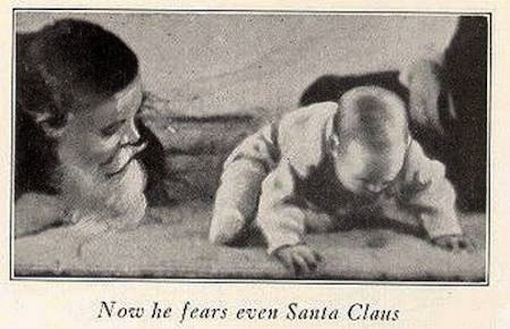
Watson apparently planned to “de-sensitize” the infant, but the infant was removed before the experiment was finished
Watson’s Behaviorism
You can read Watson’s Behaviorism by downloading it from the internet archive.
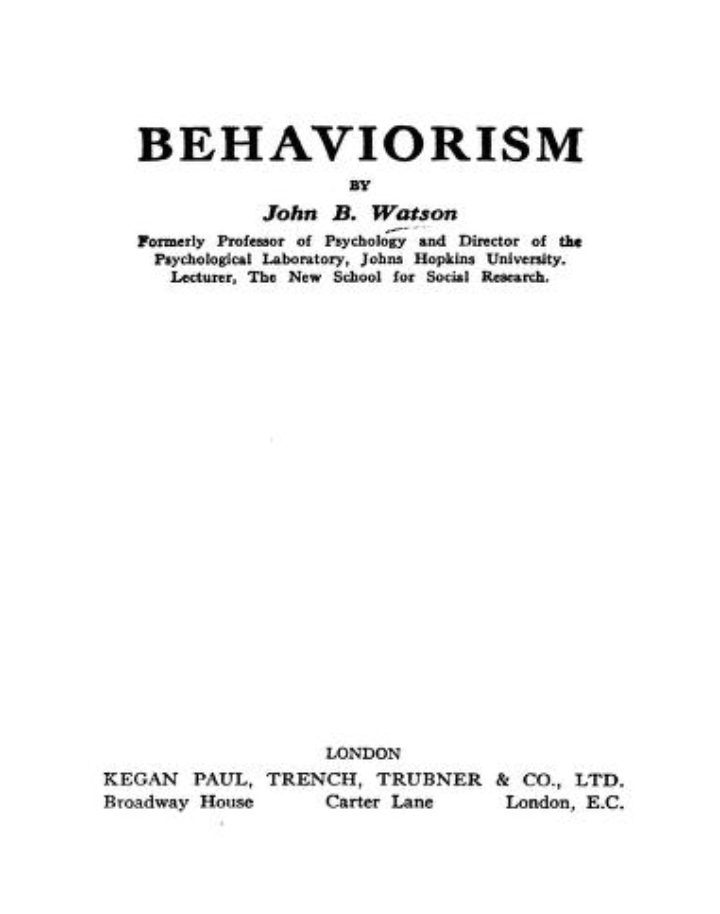
S-R positivism
Watson follows Comte’s positivism to criticize psychology and replace it with behaviorism.
He argues that introspective psychology had a strong religious background (e.g, Comte’s theological stage), invoking God-concepts to explain the mind
That introspective psychology referred to abstract entities like consciousness which were unscientific (e.g., Comte’s metaphysical stage).
He then advanced behaviorism as the proper scientific discipline to study people and animals (the positive stage).
Watson’s S-R system
Watson identified terms like stimuli and response, and made grand claims about possible functional relationships between them…
but did not supply a detailed mathematical analysis of assumed lawful connections between stimuli and responses.

Watson’s Utopia
In the tradition of positivism, Watson also described how Behaviorism would become a whole new way of life to “improve” society.
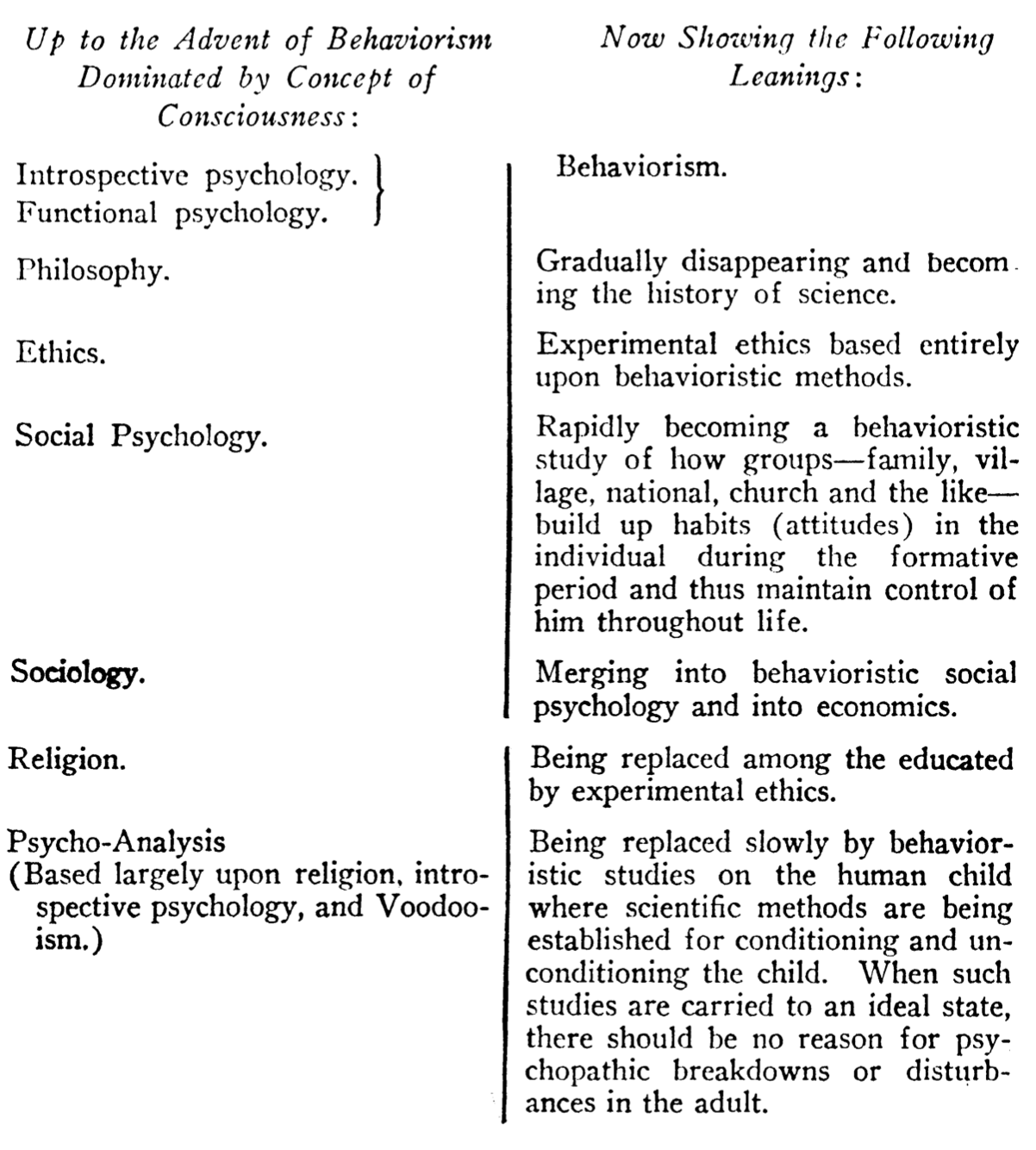
Roadmap
1 Positivism
2 Watson’s Behaviorism
3 Tolman’s Behaviorism
4 Hull’s Behaviorism
5 Skinner’s Behaviorism
E. C. Tolman (1886-1959)
Early “Cognitive” Behaviorist
Studied maze-learning abilities in rats
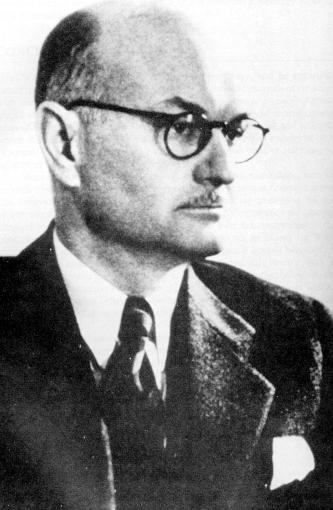
Molar definition of Behavior
Behaviorists were attempting to carve out space between mentalistic psychology and physical physiology
Tolman argues in favor of a molar definition of Behavior, that behaviors are things in and of themselves that could be studied, irrespective of their “molecular” units.
- scroll down for a few Tolman quotes
Tolman quote I
‘Behavior’ has distinctive properties all its own. These are to be identified and described irrespective of whatever muscular, glandular, or neural processes underlie them. These new properties, thus distinctive of molar behavior, are presumably strictly correlated with and, if you will, dependent upon, physiological motions. But descriptively and per se they are other than these motions.
Tolman quote II
A rat running a maze, a cat getting out of a puzzle box, a man driving home to dinner, a child hifing from a stranger, a woman doing her washing or gossiping over the telephone, a pupil marking a mental test sheet, a psychologist reciting a list of nonsense syllables, my friend and I telling one another our thought and feelings– these are behaviors (qua molar). And it must be noted that in mentioning no one of them have we referred to, or, we blush to confess it, for the most part even known, what were the exact muscles and glands, sensory nerves, and motor nerves involved. For these responses somehow had other sufficiently identifying properties of their own.
Purposive and cognitive components
Tolman argued that a science of behaviorism should include description of goals, purposes, and cognitive aspects of behavior
Early on he suggested that cognition was merely descriptive of a behavior, and later on he developed cognitive process explanations of maze running in rats
Maze learning
Tolman created many mazes, and investigated how rats learn to navigate the maze to find food reward at the end
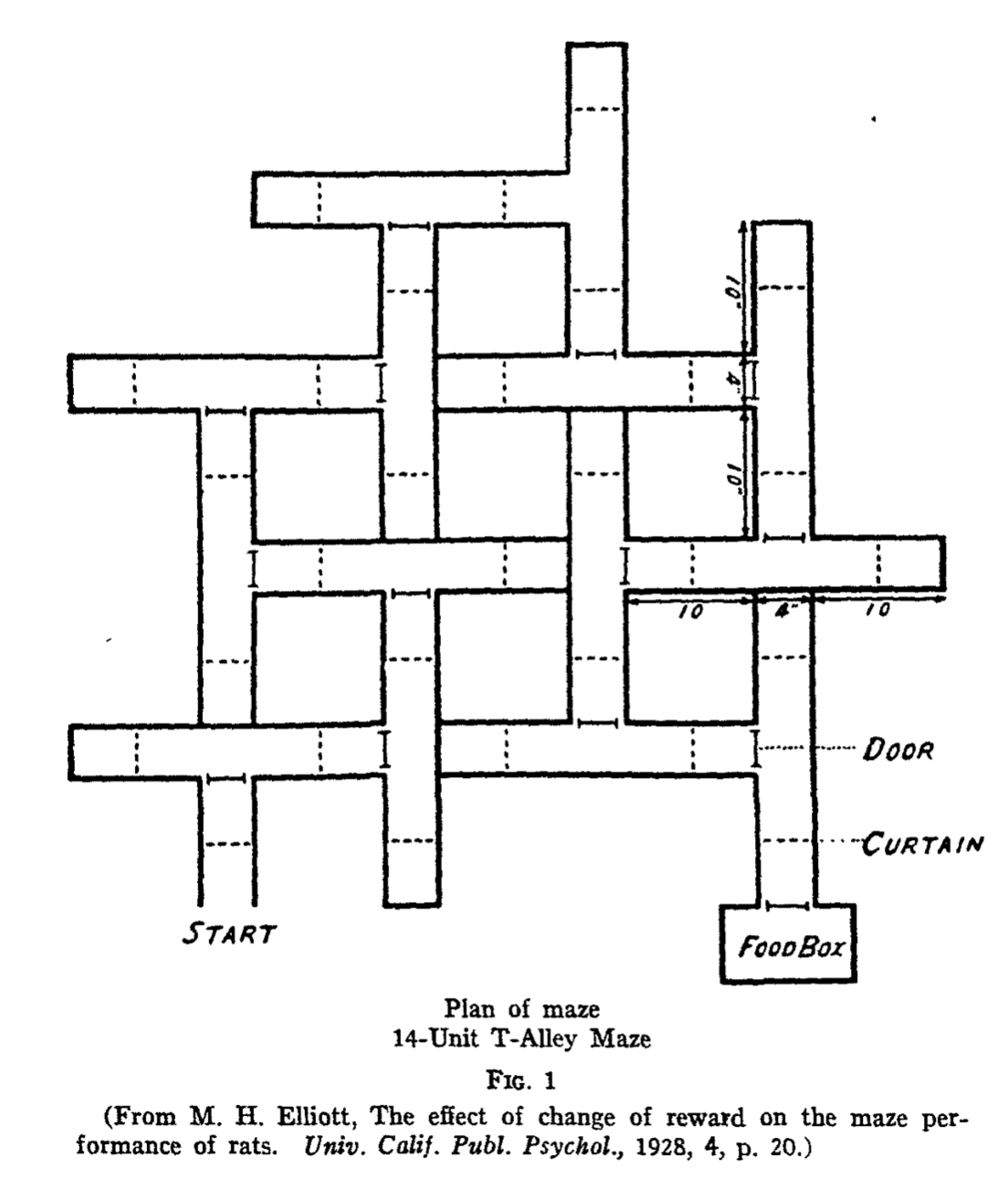
Evidence for purposive behavior
Tolman manipulated level of hunger, and whether or not rats received food reward at the end of a maze
Result: The “Hungry-Reward” group learned the maze fastest over many days
Inference: The “Hungry-Reward” rats had more “purpose”, which drove them to learn the maze more efficiently
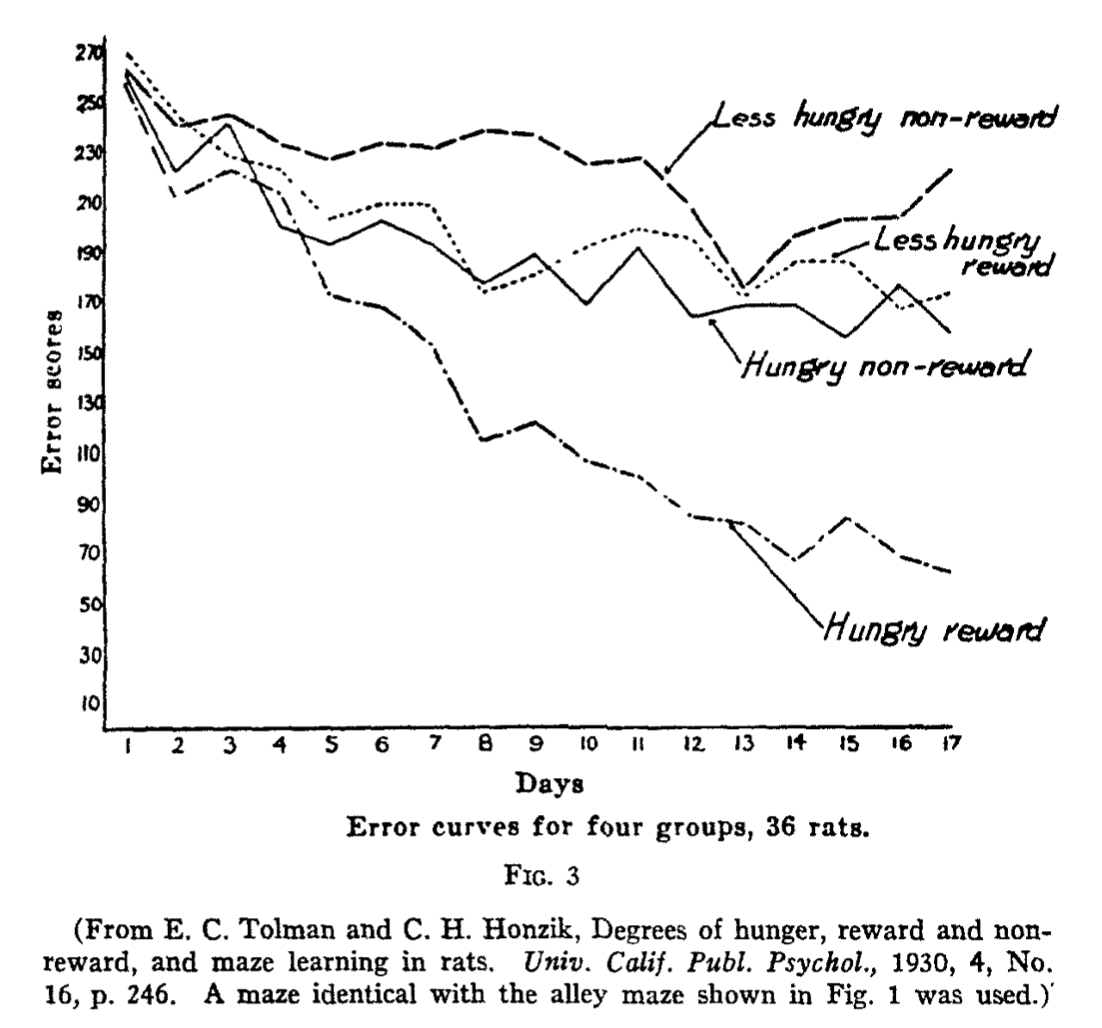
Evidence for cognitive behavior
Gingerelli’s maze gave rats many options to get from start to finish
Result: Rats learned to take the shortest paths
Inference: Rats were showing adaptive optimization of their behavior
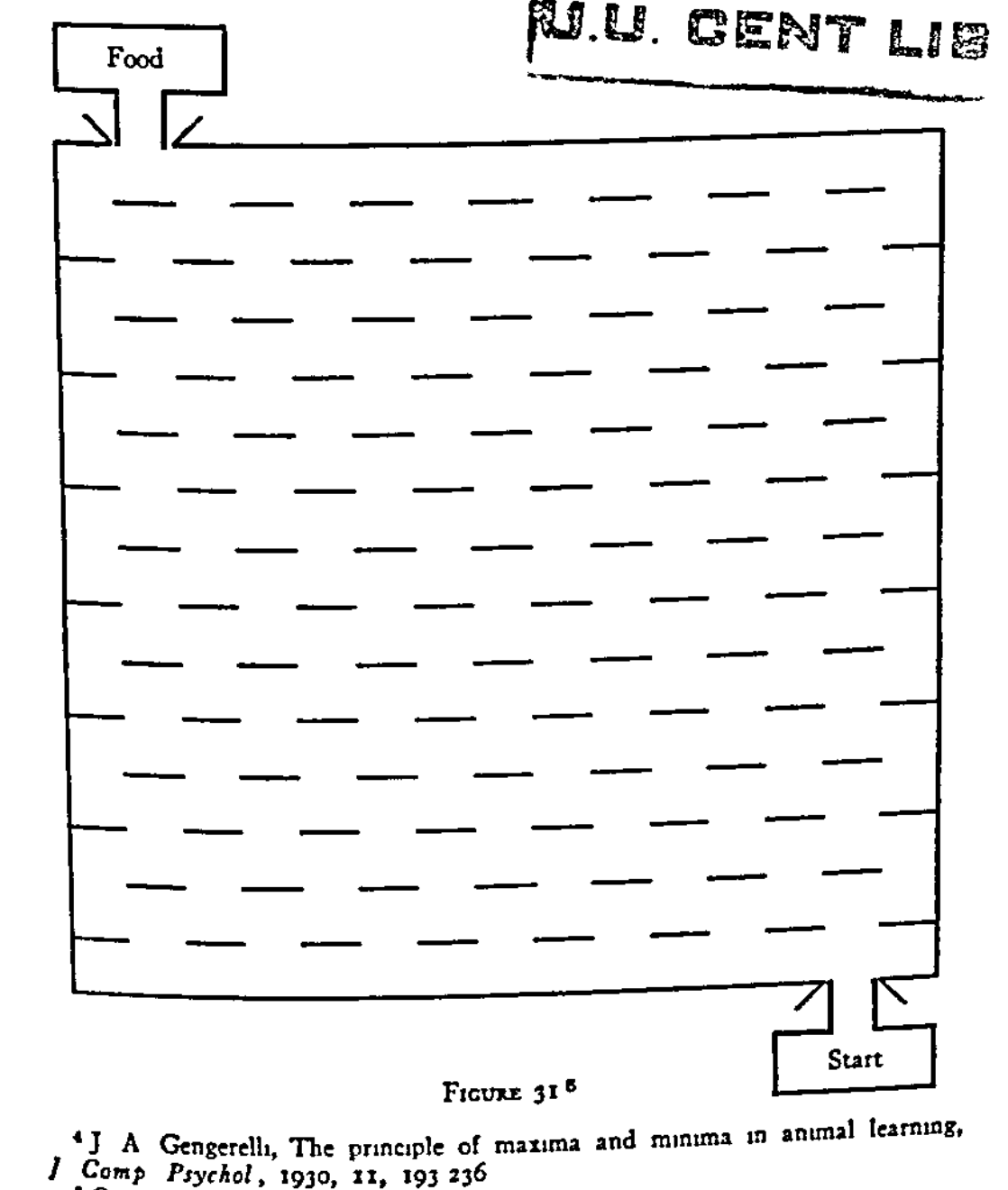
Temporal discrimination
Tolman “detained” rats in a left or right chamber for long or short periods of time
Result: Rats took the shorter route to the food
Inference: Rats could discriminate between different temporal intervals and use the information to guide their navigation decisions
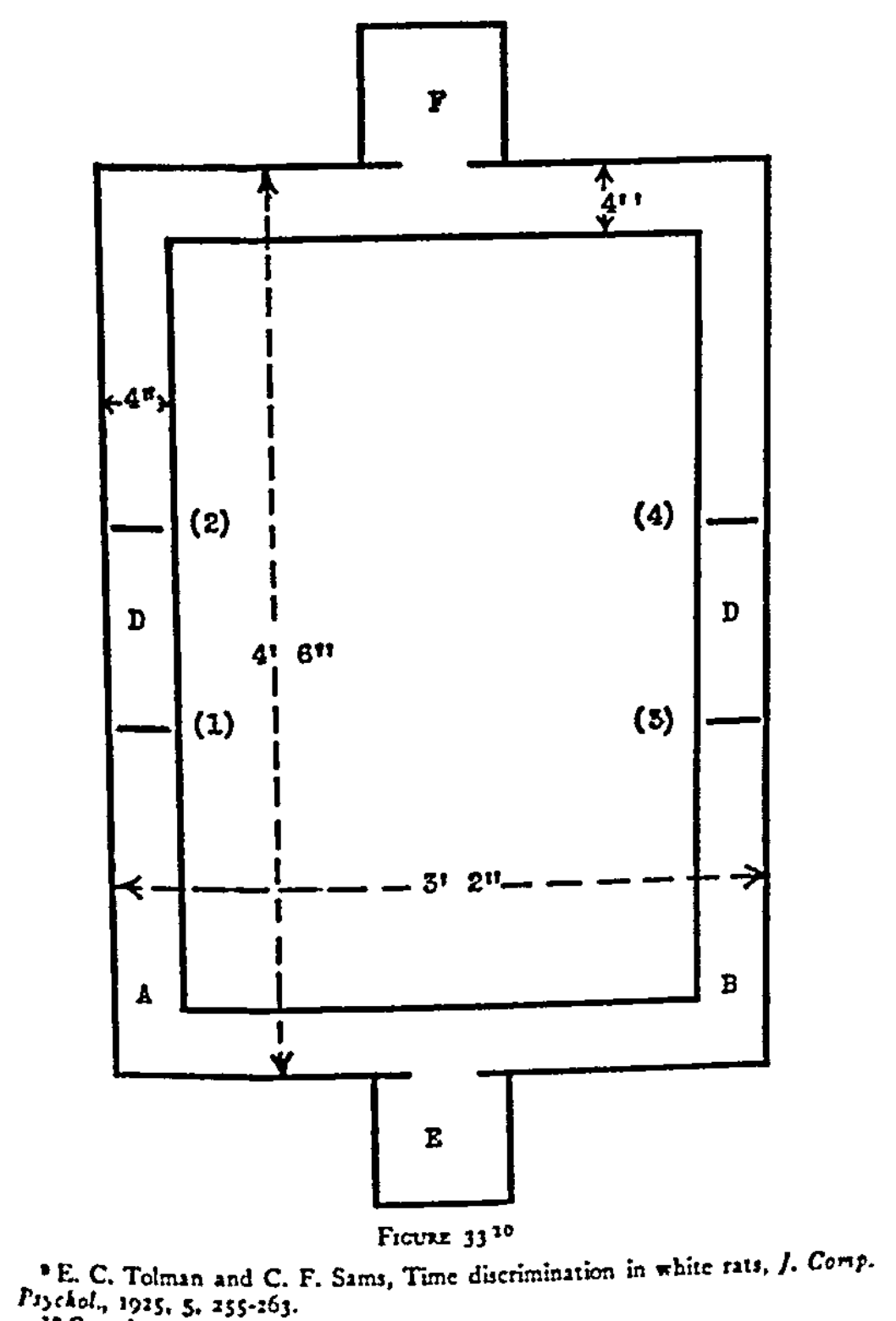
Cognitive maps in Rats and Men
Tolman, E. C. (1948). Cognitive maps in rats and men. Psychological Review, 55(4), 189–208. https://doi.org/10.1037/h0061626
Reviews his maze running research
Develops the idea that people and animals build “mental maps” of their environments to navigate their surroundings
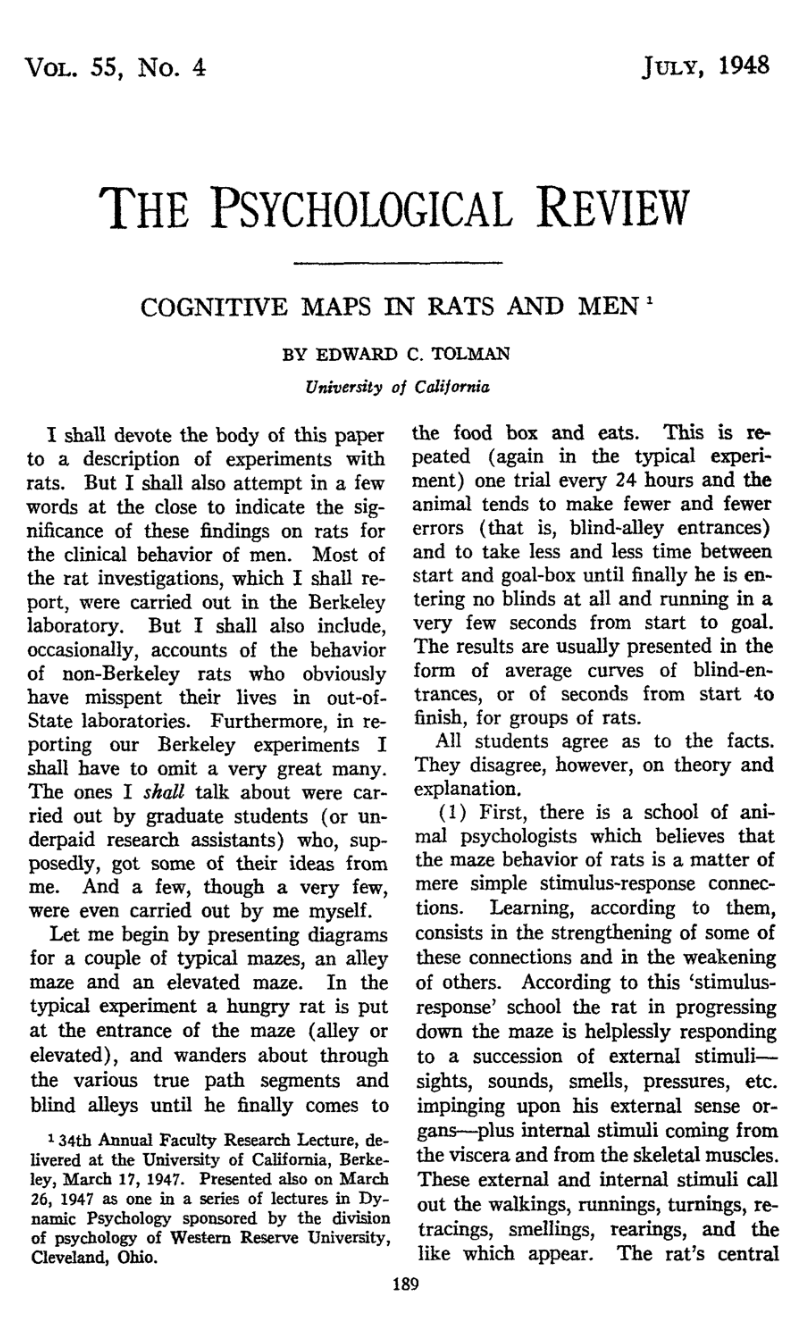
Latent learning
Group I always got food at the end
Group II and III did not get food until a specific day, marked by the X
Result: Group II and III did not learn quickly until they started received food, then they learned very quickly
Inference: Group II and III were building a map of the maze (latent learning) and could use this knowledge to quickly navigate the maze when they were motivated by food.
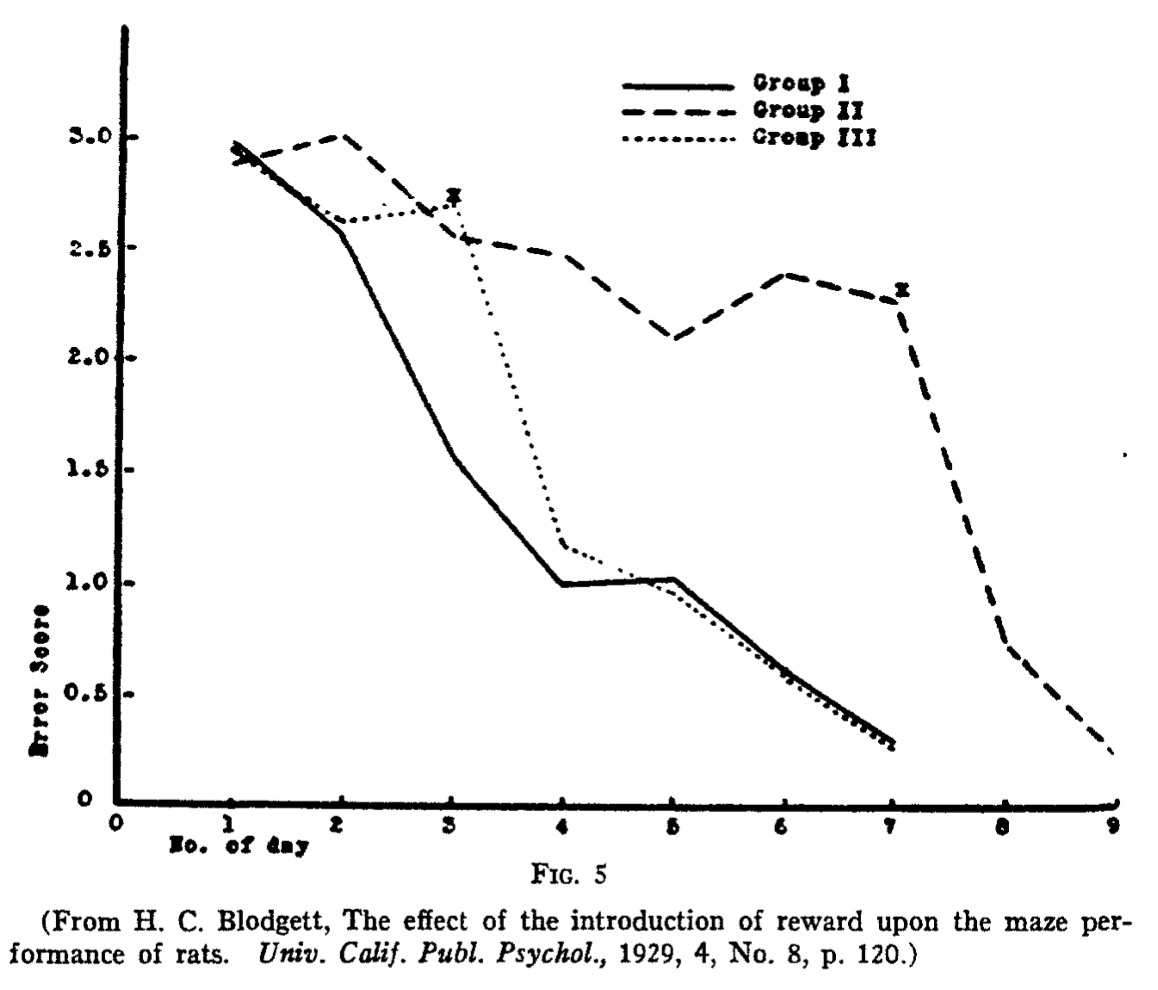
Breeding Rats for “intelligence”
Tolman, E. C. (1924). The inheritance of maze-learning ability in rats. Journal of Comparative Psychology, 4(1), 1. https://doi.org/10/d737hx
Like Thorndike, Tolman and his student Tryon analogized the maze-running procedure as a tool to measure individual differences in rat intelligence.
They attempted to breed rats to perform better on mazes over generations. Tolman reported that selective breeding did show differences in maze performance in the first generation, but not in the second generation. His student Tryon repeated a selective breeding experiment over 11 years and many more generations and found similar results.
Roadmap
1 Positivism
2 Watson’s Behaviorism
3 Tolman’s Behaviorism
4 Hull’s Behaviorism
5 Skinner’s Behaviorism
Clark L. Hull
Early Mathematical psychologist
Attempted to specify descriptive terms for a science of behavior (terms like stimulus and response, and also terms for drives and motivations), and to use math to describe lawful patterns linking terms in the system.
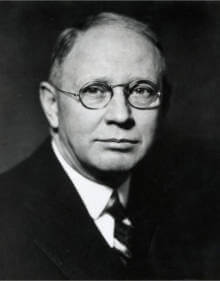
Hull Example
\(_SE_R = _SH_R × D × V × K\)
Where:
\(_SE_R\) is an excitatory potential (likelihood that the organism would produce response r to stimulus s),
\(_SH_R\) is the habit strength (derived from previous conditioning trials),
\(D\) is drive strength (determined by, e.g., the hours of deprivation of food, water, etc.),
\(V\) is stimulus intensity dynamism (some stimuli will have greater influences than others, such as the lighting of a situation)
\(K\) is incentive (how appealing the result of the action is).
Roadmap
1 Positivism
2 Watson’s Behaviorism
3 Tolman’s Behaviorism
4 Hull’s Behaviorism
5 Skinner’s Behaviorism
B. F. Skinner (1904-1990)
“Radical” Behaviorist
Created Operant Conditioning
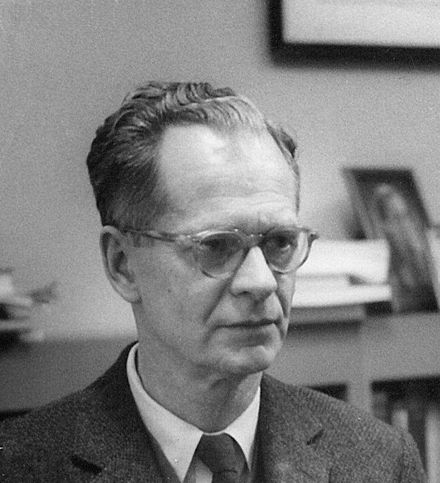
The behavior of organisms (1938)
You can read Skinner’s book where he develops and advances his behaviorism here.
Operant Conditioning
Skinner distinguished between Type S and Type R learning
Type S is like Pavlovian conditioning
An S-R relationship already exists before conditioning (e.g., food triggers salivation), and conditioning transfers control over the response from a UCS (food) to a new stimulus (tone).
Type R learning refers to “operant behavior”
“Operants” are any behavior that animals do somewhat spontaneously
Type R learning involves gaining stimulus control over the behavior, so that some stimulus will cause the behavior to occur with regularity.
Lever pressing
Skinner placed rats in boxes equipped with a lever
Rats would spontaneously hit the lever (the operant behavior)
Skinner developed methods to systematically predict and control lever-pressing behavior in the box
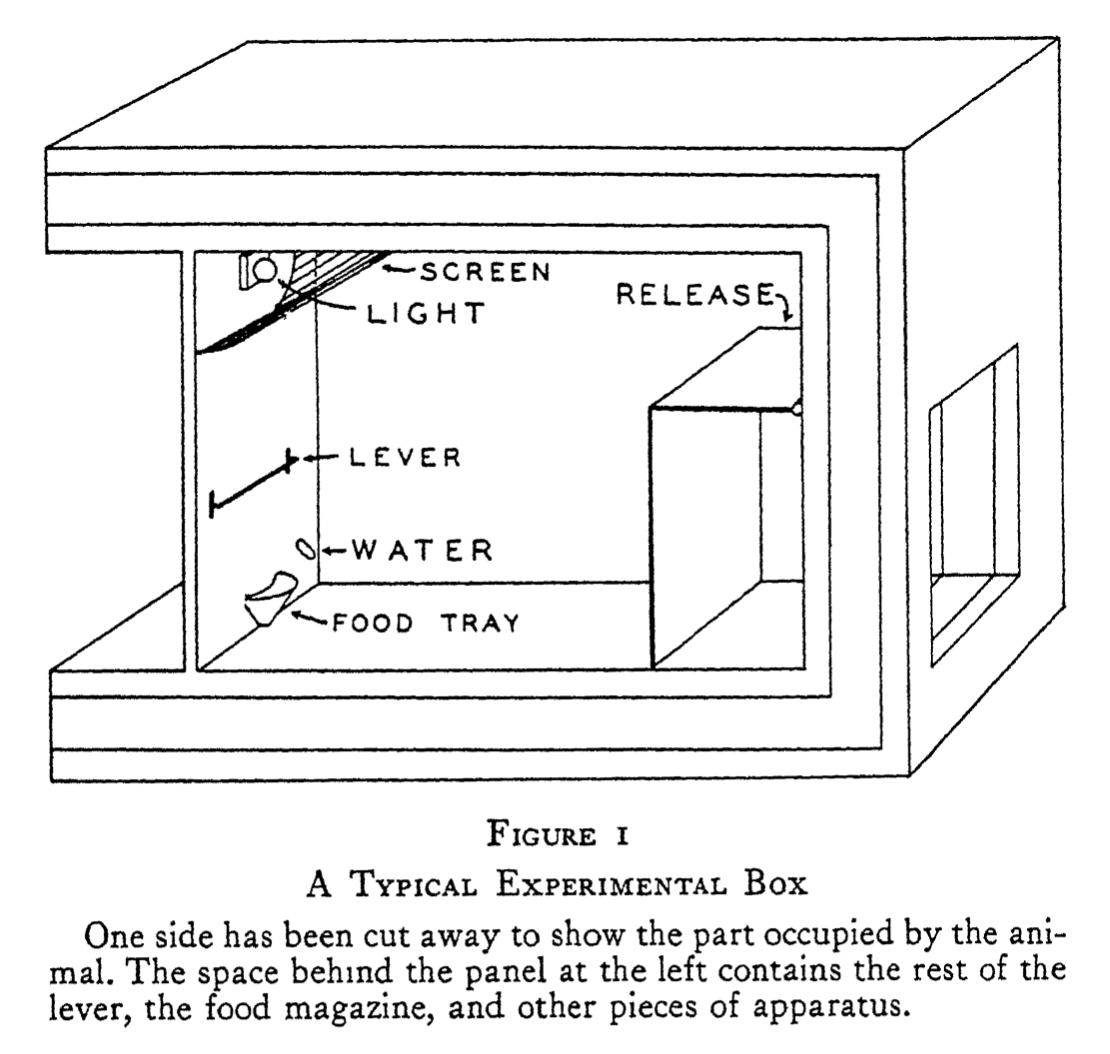
Simple Operant conditioning
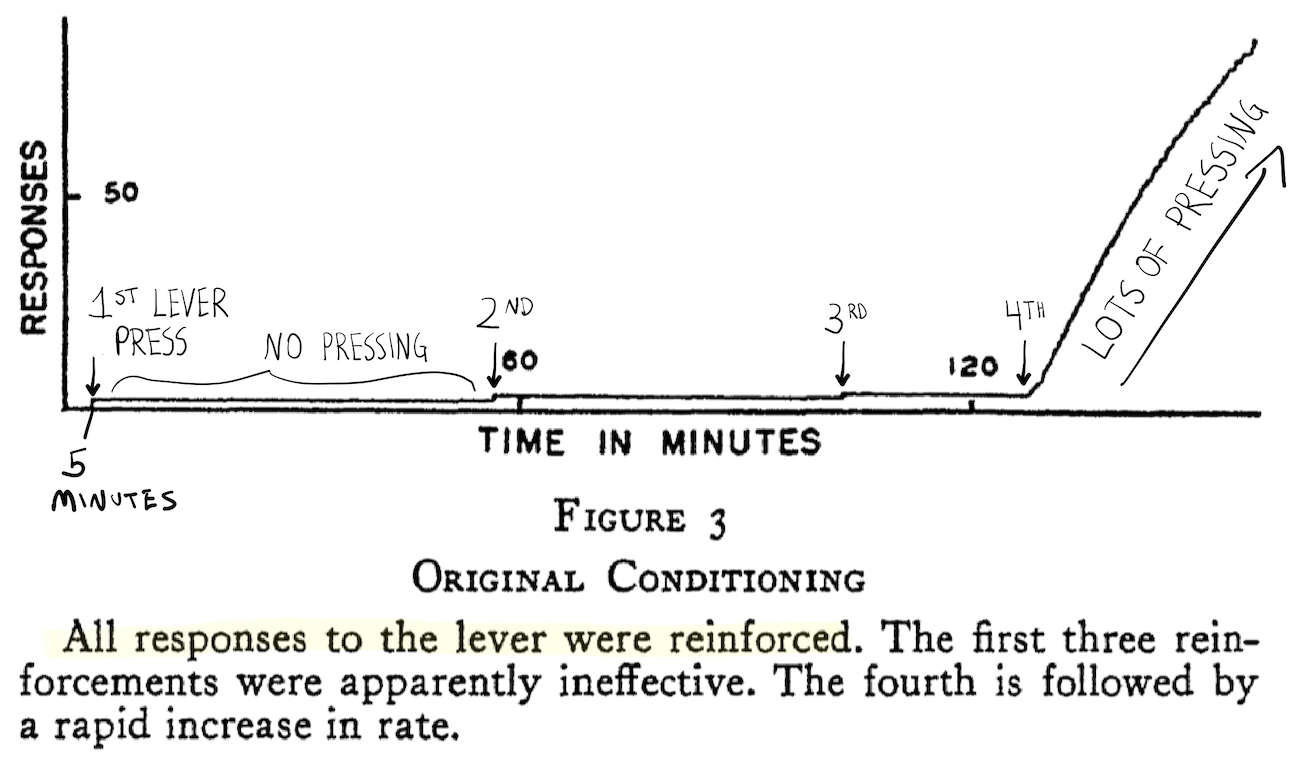
Interpreting results
Skinner chose a simple behavior to measure
He measured rates of response (lever-pressing per unit time) under different conditions
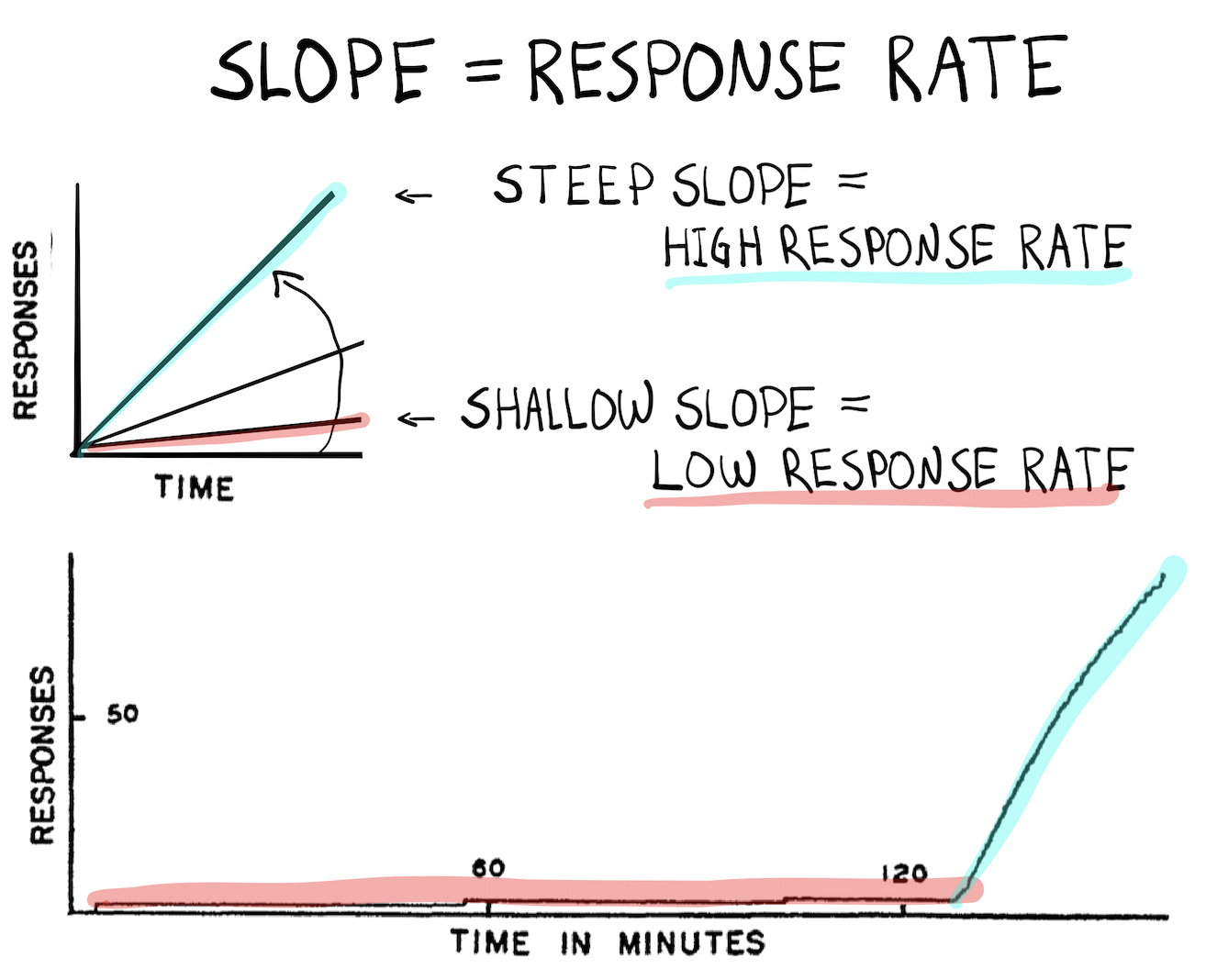
Describing results
Skinner showed operant forms of learning that were similar to Pavlov’s conditions
He set out to develop an abstract description system capable of predicting and controlling lever pressing
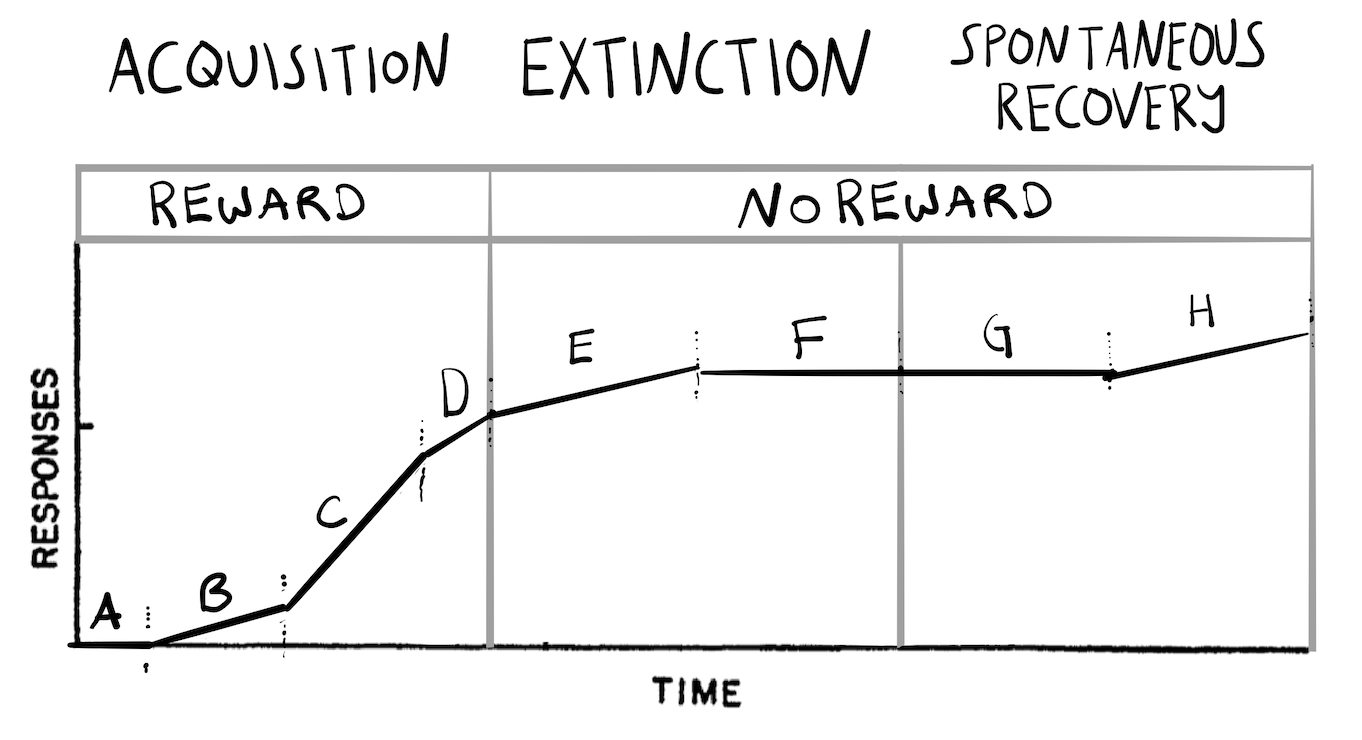
Skinner’s System: Reflex Strength
Skinner’s system involved his own set of terms and lawful relationships. The terms were intended as abstractions, and the laws were supposed to be empirically verified regularities in behavior.
Reflexes were any operant behavior
Reflex strength referred to probability of making a response
Skinner’s principles
One goal was to experimentally derive principles that seem to predict and control behaviors of interest
- scroll down for some of the principles he proposed
Example principles
The Law of Threshold The intensity of the stimulus must reach or exceed a certain critical value (called the threshold) in order to elicit a response.
The Law of Latency An interval of time (called the latency) elapses between the beginning of the stimulus and the beginning of the response.
The Law of the Magnitude of the Response The magnitude of the response is a function of the intensity of the stimulus.
The Law of After-Discharge The response may persist for some time after the cessation of the stimulus
Applications: Project Pigeon
In project pigeon, Skinner trained pigeons to pilot guided missiles

Walden two
Again in the general positivist tradition, Skinner wrote a Utopia fiction called Walden two
Describes how behavioral engineering through elaborate operant conditioning could improve the lives of 1000 people in a commune, by ensuring they would live happy, productive, and conflict-free lives

What’s next
Complete the quiz for this learning module on Blackboard, and/or the writing assignments by the due date.
This is the last learning module before the first midterm
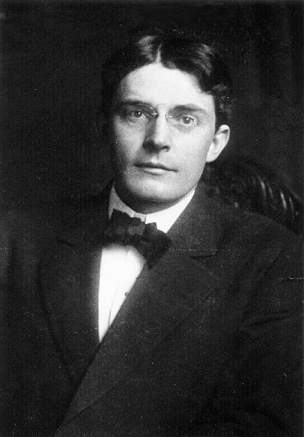
Social engineering
Watson envisioned how a science of behaviorism would enable social engineering at a broad scale..